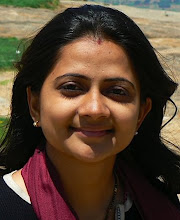'Bhujanga' means a serpent. In the pose of Bhujangasana, one imitates a cobra reared up on its caudal support and the hood fully expanded. So this asana is called Bhujangasana.
Technique :
Technique :
- Lie on the floor with the face downwards. relax all the muscles of the body. Spread your hands on the floor under your shoulders. Hug the elbows back in to your body.
- On an Inhalation,slowly raise the head and the trunk like the hood of a serpent. Bend the spine backwards.Stretch the feet backward so that the toes touch the ground.Firm but don't harden the buttocks.
- This will stretch well the muscles of the back and the shoulders.There will be strain on the abdomen.
- Lift through the top of the sternum but avoid pushing the front ribs forward which only hardens the lower back.
- Hold the breath and hold this position for six to eight seconds. Then exhale and bring the head to its original position.When you first lie on the ground, keep the chin touching the chest.
- Hold the breath till the head remains in the raised position.
Benefits of Bhujangasana :
- The cobra pose is a great exercise for people with lower back aches. This asana decreases stiffness in the lower back, enlarges the chest, and stregthens the arms and shoulders.
- This asana exerts pressure on the internal organs of the abdomen.It pushes waste matter to the anus and thus cures constipation and increases the heat in the body.
- This asana helps relieve stress and fatigue.
- It is therapeutics for Asthma.
- It strengthens the ovary and the uterus.It removes the disorders related to menstruation.
- This asana stimulates blood circulation in the uterus with the resullt that delivery becomes natural and easy.
- Affects the adrenal glands, sending them a richer supply of blood.
- Traditional texts say that Bhujangasana increases body heat, destroys disease, and awakens Kundalini.
Contraindications :
- Arthritis in spine or wrist
- Hernia
- Carpal tunnel syndrom
- Pregnancy
- Internal organ surgery





No comments:
Post a Comment